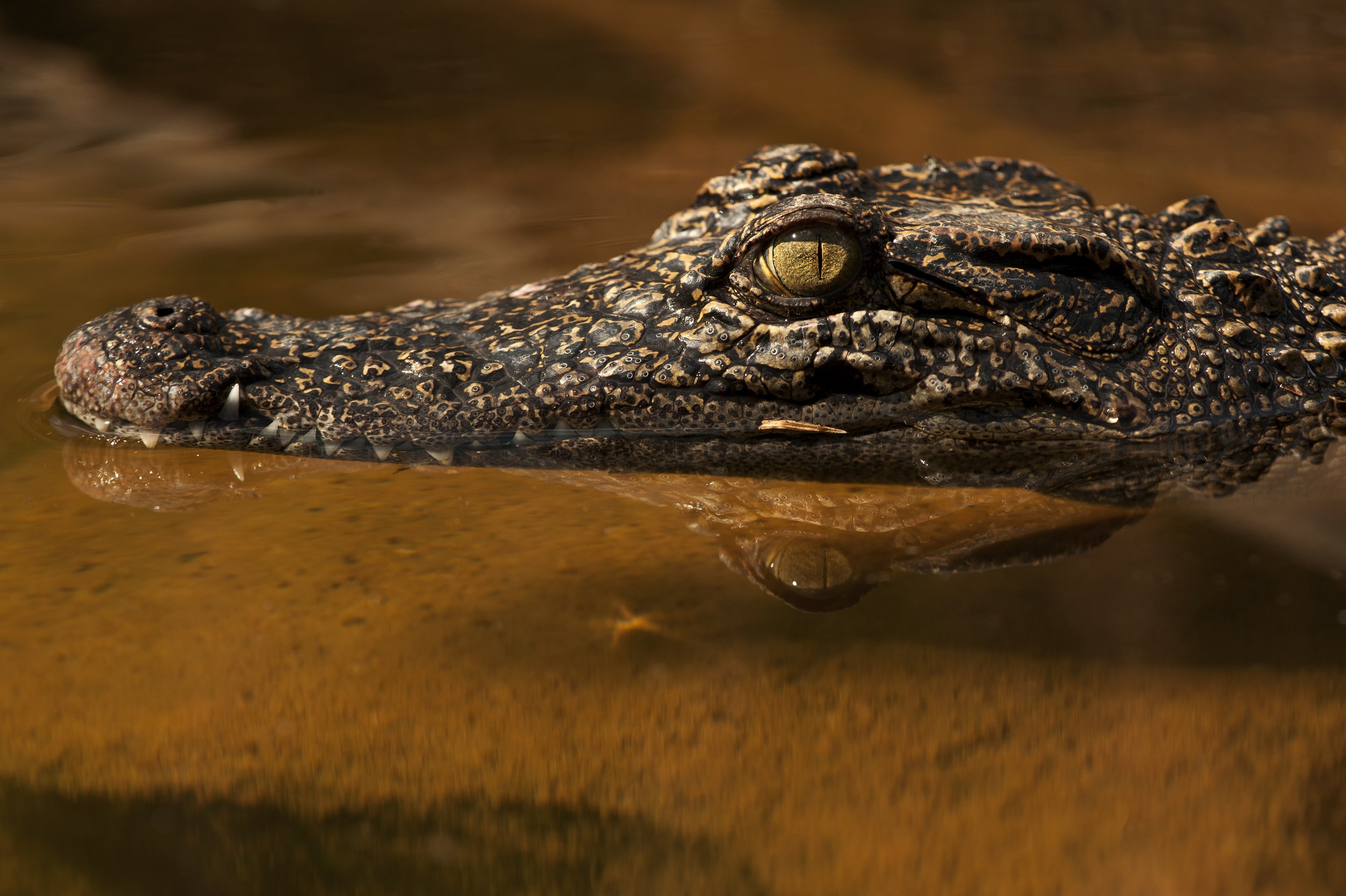Cambodian Siamese Crocodile Conservation
Blueprint
ASSESS
In 2000, Fauna & Flora International (FFI) led a survey team through Cambodia’s Cardamom Mountains, where they 'rediscovered' the Siamese Crocodile; at the time, the species had been considered virtually extinct in the wild. Annual surveys were subsequently conducted throughout Cambodia, in collaboration with the country's Forestry Administration, to record direct sightings, signs, and nests. The surveys found that the species was mostly restricted to remote parts of the Cardamom Mountains. The national population numbered only 200–400 individuals. In addition to being very small, the population was fragmented and fewer than five nests were recorded annually. After surveying, it was determined that population recovery would require a concerted conservation effort, including population reinforcement and reintroduction. This crocodile has been categorised on the IUCN Red List of Threatened Species as Critically Endangered since 1996.
PLAN
As a response to the species' critical situation, FFI established the Cambodian Crocodile Conservation Project (CCCP). The project is a multi-award-winning partnership between the Cambodian government, local communities, and FFI that aims to restore the Siamese Crocodile population.
In 2012, CCCP developed a Siamese Crocodile action plan based on data from the population and habitat surveys conducted over the previous decade. The plan set out to re-establish viable, breeding populations of Siamese Crocodiles in Cambodia by: 1) releasing crocodiles into areas from which the species had been completely wiped out; 2) identifying suitable locations for future reintroductions; and 3) translocating crocodiles to existing, severely depleted colonies.
The long-term goal of the action plan is to establish a fully viable wild population of at least 10,000 Siamese Crocodiles over the next 20 years. With conservation success, the project can use this charismatic reptile as a flagship species for conserving threatened rivers and wetlands across the country. Doing so will benefit multiple species, freshwater ecosystems, and the Cambodian people.
ACT
In 2012, a Siamese Crocodile conservation breeding facility was established to boost crocodile numbers. The facility enhances the recovery and viability of wild populations by producing captive-bred crocodiles for release into the wild. These are complemented with releases of Siamese Crocodiles confiscated from poaching and illegal farming activities, or donated by crocodile farms. Scientific approaches are employed in husbandry, health, and monitoring efforts, both pre- and post-release.
FFI and the Royal University of Phnom Penh (RUPP), in collaboration with the Royal Zoological Society of Scotland (RZSS), set up the first wildlife genetics laboratory in Cambodia in 2019. At this lab, testing is performed to determine whether confiscated and/or donated crocodiles are purebred C. siamensis before they enter the breeding and release programme. Doing so preserves the integrity of the Siamese Crocodile gene pool by preventing hybrid crocodiles, prevalent in crocodile farms, from entering the breeding and release programme.
Protected in situ sanctuaries, managed and patrolled by local community wardens, and managed in collaboration between the Cambodian government and FFI (local CCCP staff), were also established for the safe return of reintroduced crocodiles. These conservation efforts are made in close partnership with local community crocodile wardens, who regularly patrol the reintroduction sites, and protect the crocodiles from poaching and illegal capture.
Conservation success is also dependent on campaigns to raise awareness among the Cambodian public about the plight and protected status of the Siamese Crocodile. Indigenous peoples of Cambodia have long revered and protected crocodiles — their support has been, and will continue to be, integral in garnering broad public support for preservation of both crocodiles and their cultural legacy. With the investment and interest of locals, these crocodiles are more likely to become a national conservation priority.
Results
From 2012 to 2020, over 100 Siamese Crocodiles were released into the wild. The programme's captive breeding capacity has been expanded to increase the level of releases over the coming years.
Five sites in the Cardamom Mountains, holding the largest known concentration of the species globally, have been secured as crocodile sanctuaries and are regularly patrolled by community wardens. These sites also have the added benefit of creating protection for other native wildlife, thereby preserving the rich biodiversity of this region.
The work of the CCCP programme has had wide reach within Cambodia with a presence on both national media and social platforms. Local communities adjacent to project sites are included and engaged in conservation efforts, while also benefiting from development and support of sustainable livelihoods.
Annual monitoring results show that the population has stabilised and is increasing at key sites. Additional sites for release are being identified, and new monitoring methods, including satellite and passive integrated transponder telemetry, will be trialed for future advances in crocodile conservation.
Visual & Audio References
© Jeremy Holden & Pablo Sinovas
Collaborations
Major
Partners
Fauna & Flora International (FFI)
Cambodia's Ministry of Agriculture, Forestry and Fisheries
Cambodia's Ministry of Environment
Local Communities
Additional
Contributors
RUPP; RZSS; Rising Phoenix; Wildlife Alliance
Donors
Over many years, donors include PTES; CEPF; Darwin; Cool Earth; Disney; Various Zoos and Private Donors
Additional Resources
Content Updated as of 8/6/2021






